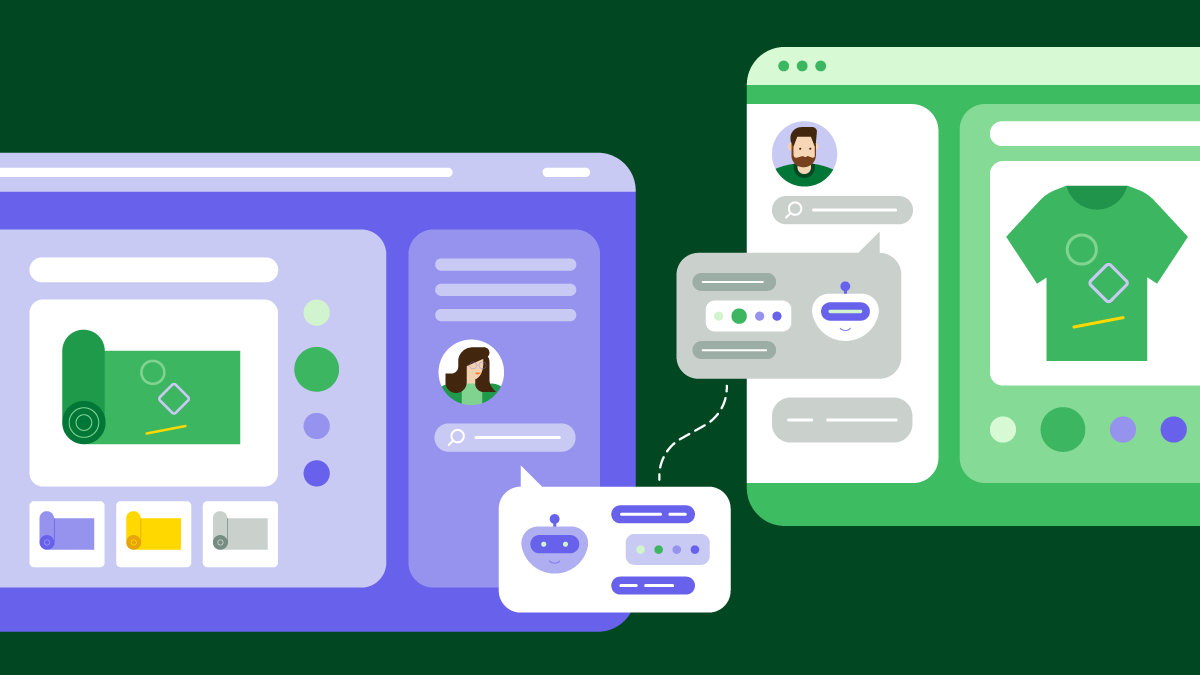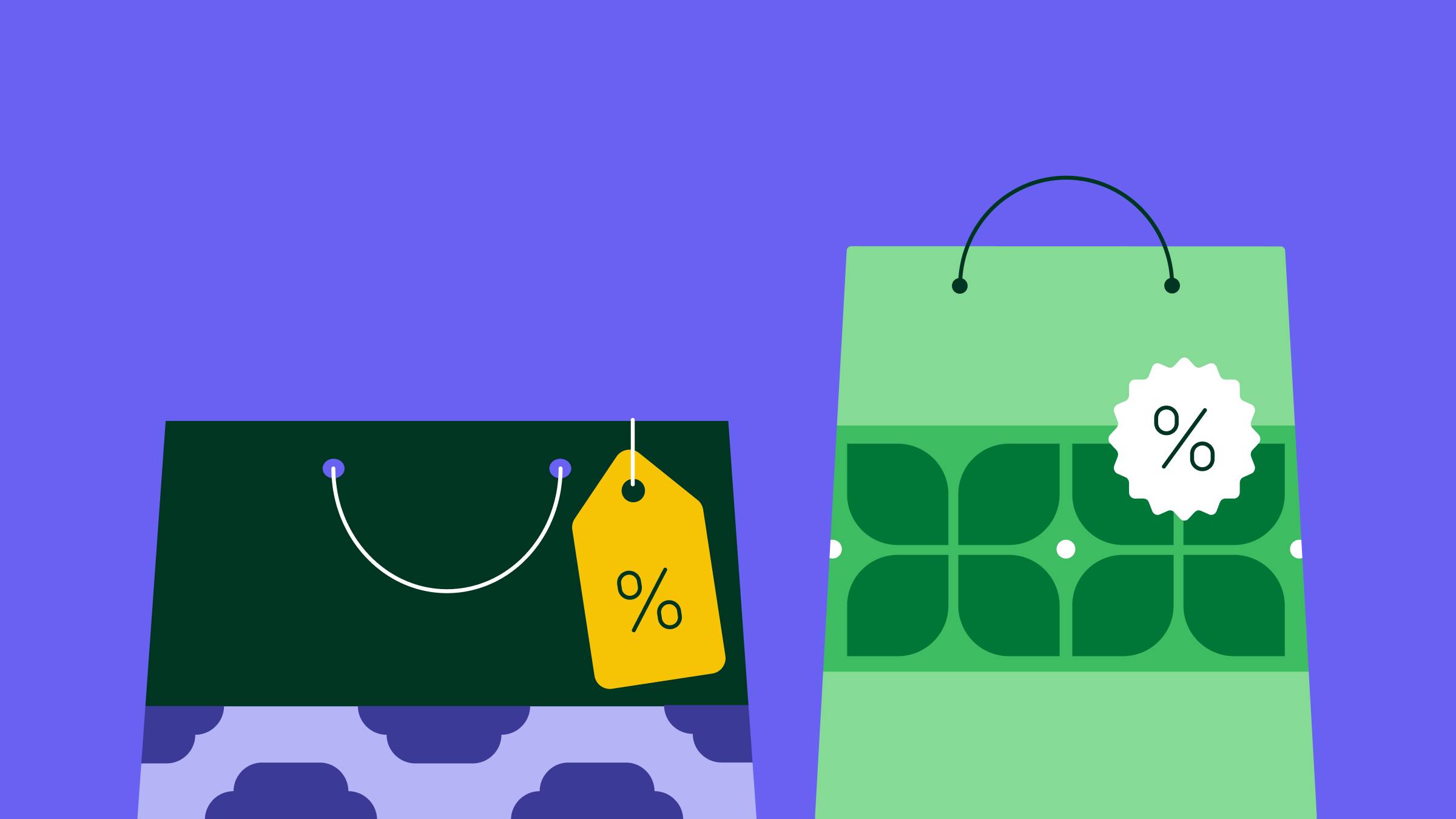With exposure to thousands of ads per day, your customers don’t want to be sold to. That makes things quite challenging when it’s your job to sell. By putting value first and solving their problems, you’ll meet in the middle to gain trust and build profitable relationships.
Value selling, or value-based selling, shifts your customers’ minds from a product’s immediate cost to its lasting benefits, making purchases easier to justify.
In this article, we’ll show you how to build a value selling framework to help you convert your ideal customers and boost your bottom line. We’ll also explore some best practices and get your ideas flowing with real-world value selling examples.
What is value selling and why should I use it?
Value selling is a sales methodology that emphasizes the positive impact a product or service can have on prospective customers. By prioritizing value, salespeople help buyers see past an item’s immediate cost to make their purchase decision easier.
Some salespeople equate value selling with consultative selling, and the two are closely related. Others adopt it as more of an ideology to provide value first and sell later. This works as most buyers put product value before cost.
Solution selling is another similar strategy, but value selling is slightly different in a significant way. Which of the following statements do you think accurately describes value-added selling?
Focusing on how much your prospect is spending on the problem versus the cost of your product that could help them solve it
Focusing on how your product can help them solve the problem they face and the measurable benefits of using the product
That’s right, option 1 is value selling, as it focuses in on the financial value, simplifying the decision for your prospect, while option 2 is solution selling.
One McKinsey survey found value to be the third most common reason for buyers to switch brand allegiances after availability and convenience. Another from Gartner found that almost two-thirds of consumers will stop buying from brands that compromise on value to cut costs.
Value is higher on buyers’ priority lists than many price-obsessed businesses realize. Appealing to that desire can help you get ahead of your competitors.
Key takeaways from this article
Build a value selling framework: The best practices for converting ideal customers and boosting revenue by addressing customer needs and pain points.
Real-world examples: Brands using value selling to enhance their offerings and customer satisfaction.
Use Pipedrive’s CRM system to centralize customer data, refine your value-selling approach and improve your sales performance. Try Pipedrive free for 14 days.
What does value look like? 4 key value categories
Value means different things depending on a buyer’s needs, pain points and circumstances.
For example, a customer relationship management (CRM) tool’s mobile capabilities are more valuable to a field sales team than to one focused on inside sales.
That said, business-to-business (B2B) buyers generally want products and services that will help them make money, save money, differentiate their brand or reduce operational risks.
To build an effective value selling framework you must determine how your product contributes to these goals.
Increase profit. What return on investment (ROI) will the buyer get from your product? If a $1,000 sales training course helps an organization’s sales reps generate $3,000 in additional revenue, the buyer’s investment is easily justifiable.
Reduce running costs. How will your product help the buyer save money? For example, Campaigns by Pipedrive allows users to create professional marketing emails quickly and with minimal design skills, meaning they don’t need to pay for specialist help.
Create a differentiation. How can you help your customer enhance their own offering? For example, UK firm Ecologi offers a tree-planting service to businesses. Once signed up, its partners can let customers know their purchases contribute to climate solutions, potentially increasing sales.
Minimize operational risk. How does your product reduce uncertainty and increase security for customers? For example, expert IT support helps businesses minimize downtime to avoid losing profit or disappointing customers.
Your product may fall into more than one of these categories but if it doesn’t, that’s fine. Avoid emphasizing any benefits that aren’t really there as you risk disappointing customers in the long run.
How to build a value selling framework in 4 simple steps
You can’t transition to value selling overnight. First, you must build a value selling framework of product and audience knowledge. This will let you know exactly who your customers are, what matters to them and how to deliver value where your competitors can’t.
You may already have some valuable insights in your CRM system. Ideal customer profiles (ICPs), buyer personas, transaction histories and contact timelines are all useful here.
To fill the gaps, follow these steps:
Step 1. Collect data to understand your audience
When you know what matters most to your target audience, you can emphasize your products’ relevant features in sales conversations.
While all four types of value we covered earlier are useful to businesses, each of your ideal buyers will have their own priorities.
Take time to get to know your audience. Learn about their challenges, pain points and apprehensions (i.e. what they value most) by:
Tracking marketing engagement. Website, social media and email marketing analytics data will help you pinpoint your audience’s interests. For example, say your targeted email blast on cost-cutting has a higher click-through rate (CTR) than the next best-performing campaign. That tells you that segment of your audience cares about cost efficiency.
Reading customer reviews. Reviews will tell you clearly what people are looking for in a product. For example, if the negative reviews of a competing cloud storage service often mention “a lack of support options”, you know to talk about support availability in your sales pitches.
Conducting customer surveys. Don’t be afraid to ask direct, open-ended questions using customer surveys, like “What do you value most in a [X] solution?” Respondents’ answers will help you maximize the value of your product, so it’s in their interest to provide insights.
Speaking to customer support teams. When customers ask for help or information, they’re usually frank about their needs. Ask support staff to provide key takeaways from their customer conversations to refine your buyer personas. For instance, if 20% of customer inquiries relate to monthly payment options, it suggests your audience values flexibility.
Use a good CRM system to centralize and organize data from these sources. It’ll help you build a clear, dynamic picture of what your audience values to inform your sales and marketing strategies.
Step 2. Assess your own offering (and refine as necessary)
Once you know what your target audience is looking for, identify the value in your products so you can:
Highlight the most relevant features in marketing content to generate higher-value leads (i.e. those most likely to become loyal customers)
Provide personalized product recommendations in sales conversations to build trust and increase customer satisfaction
Say you run a software-as-a-service (SaaS) business with a target audience of financial advisors. You know from CRM insights that data security is important to these buyers.
Ask yourself which features will help users protect customer information and how you can demonstrate them. Say your business uses data encryption and two-factor authentication (2FA). You can explain this in marketing content and conversations with potential customers to preempt questions.
If you find your product doesn’t fully meet buyers’ needs, refine it (e.g. by working with the relevant teams to develop new features) or redefine your target audience.
Step 3. Know your competitors to define your USP
Some prospects are likely considering or already using your competitors’ products. That’s not a bad thing, it just means they already appreciate the broader value of your solution. You just need to convince them you have the best version for their needs.
Learn what you’re up against. Research your competitors’ weaknesses by looking at their promotional content and reviews to see what makes you stand out. Understanding your unique selling proposition (USP) allows you to emphasize product qualities that speak to your customers throughout the sales process.
Consider your competitors’ strengths too. What do they offer that you can’t? Does that matter to your audience? What’s the trade-off? Answering these questions early will prepare you for prospects’ objections later in the sales cycle.
For example, say ABC Insurance uses “deductible-free business policies” as a value proposition while 123 Insurance always requires a $300 deductible per claim. Not having to pay out of pocket for a claim is a clear strength. However, if the well-informed sales team at 123 Insurance knows that the average ABC policy is $400 more expensive than its own, it can provide prospects with valuable context that makes them more likely to convert.
Step 4. Shift your focus to customer quality
Value selling demands more attention from sales professionals than more straightforward methods, like results-based selling. It might take longer for you to close deals, but the payoff will likely be greater.
When you understand and speak to the needs of individual customers, you’ll naturally start selling to people who get lasting value from your products. These are the buyers most likely to:
Make repeat purchases, reducing your customer acquisition costs (CAC)
Pay for premium features, increasing average deal value
Advocate for your brand and product, gaining you more customers
As you begin to use value selling more, pay less attention to how many deals you close and focus more on sales performance metrics like customer lifetime value (CLV) and average revenue per customer. These should show that you’re reaching the people most valuable to your business.
4 tips for buyer-first value selling
You won’t be the only one using value selling. One study in 2021 claimed that 87% of high-growth sales organizations take this approach.
Despite that, many buyers still aren’t enjoying their sales experiences, suggesting not all businesses are value selling well. Over three-quarters (77%) of the B2B buyers Gartner spoke to said their latest purchase was “very complex or difficult”.
Here are four tips to help you convert high-value prospects and keep them satisfied post-purchase.
1. See yourself as a consultant
The value selling methodology requires you to adjust your thinking pattern.
Rather than focusing only on closing deals or progressing through the selling process stages, prioritize being useful for your prospect. Essentially, be part of the value in “value selling”.
See and present yourself as a trusted advisor, committed to helping the buyer maximize their ROI.
Cognism’s Bradley Davies explains it well:
This also means being honest when a product isn’t suitable.
That transparency might lose you a few low-value sales but it’ll help you in the long term. McKinsey lists it as one of the three most important factors to B2B buyers, along with speed and expertise.
2. Interact on your prospects’ terms
Communication matters to your audience, as does having a range of channels to use.
BlueVenn’s Digital Divide report shows that email and websites are the most popular ways for consumers to interact with brands, but many also like to use social media, mobile apps, phone calls and chatbots. Around a quarter of respondents even said they use direct mail.
By communicating with prospects on their terms you make their buying process more convenient.
If your CRM keeps a contact history for each buyer, check it before reaching out. If the prospect repeatedly gets in touch via email, use that to initiate conversations and make it clear that other channels are available. Don’t be afraid to ask contacts directly for their communication preferences too.
3. Talk to existing customers about value
Your existing customers are the only people who’ve experienced your entire sales process from a buyer’s perspective. They know what went well, what didn’t and where the most value lies in your products. Use these insights to refine your value-based sales approach.
Be mindful that even those who’ve been converted may not be totally satisfied with their buying experience or with their product. Speaking to them via email, social media and customer satisfaction surveys gives you a chance to right any wrongs you wouldn’t otherwise be aware of.
Ask open-ended questions for the most insightful answers and use positive experiences to build case studies that can be shared with leads and prospects.
4. Complement your value selling with a range of sales techniques
If value selling were a flawless tactic, there’d be no need for other sales methodologies. The truth is you need a mix of sales techniques to suit different buyers, products, journey stages and even salespeople.
Adam Hawes, CRO at GatherContent, explains his team’s varied approach:
“Sales methodologies are like items in your wardrobe. You need to choose the right one for the right occasion and you should be comfortable combining different methodologies to meet your ‘buyer’s needs’.
“Everything needs to start with the buyer journey and what will lead to the least amount of friction. At the moment, my team uses a cocktail of inbound, consultative and customer-centric methodologies.”
Sales methodologies often share characteristics but all have their own benefits. Ensure your team understands the basics of each and hone the ones you find most effective for your business.
Value selling examples: 3 brands to inspire
Looking at examples of value-based sales strategies in action can help you refine your own approach.
While we’re not able to listen in on real sales conversations (shadowing more experienced sales leaders and reps could allow you to do that), we can look at how brands sell value in marketing content.
Let’s look at three great examples.
1. Zapier: Grow your business efficiently
The website of automation tech provider Zapier repeatedly promises value. As well as telling prospective customers what’s possible (e.g. “automate your sales outreach”), it shares how they’ll benefit from each feature.

One line on its homepage implies growth and efficiency, reading: “Zapier empowers you to automate your work across 5,000+ apps––so you can move forward, faster.”
2. Plastiq: Save money and streamline
Payment platform provider Plastiq uses its homepage to appeal to two of its audience’s biggest pain points: paying fees and slow transactions.

Instead of just explaining the payment options users can adopt, it writes: “Accept credit and debit cards with absolutely zero merchant fees.”
Another line tells the reader exactly what to expect: “Payments get deposited directly into your bank account, meaning you get paid 7–10 days faster.”
3. Headspace: Decrease stress for a more enjoyable life
The pitch for consumer app Headspace is all about quality of life. Rather than broadly promising any general improvement, it gets specific about the value subscribers can expect.

The three main points on Headspace’s homepage lead with value:
“Find more joy”
“Get more goodnights”
“Make every day happier”
Under the first of those points, it even claims users can “feel 14% less stressed in just 10 days”, further helping potential customers justify investing.
Final thoughts
Value selling involves putting your customers and their needs at the heart of every deal. That’s how you’ll build lasting relationships that consistently benefit your bottom line.
Cost will always be important. Your products must be affordable for your target audience. However, research tells us most buyers are more interested in the long-term benefits they’ll receive from a product.
Identify these outcomes, match them to your ideal customers’ needs and weave them into every sales and marketing interaction to start closing more valuable deals in 2023.









